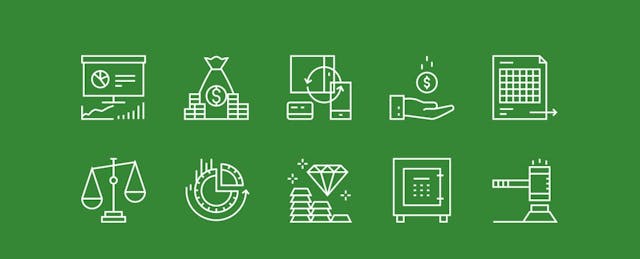Higher education has long faced a new financial normal—including pressure to hold down tuition and fee increases, cuts in governmental support, and increased competition from new players. Changes in the number and mix of students, and higher expectations from states, parents and students exacerbate these tensions.
Unfortunately, the industry’s response generally has been to tweak an existing business model that is labor intensive and often inefficient. In addition, higher education has been slow to incorporate technology in ways that would maintain quality, increase efficiency and reduce cost.
Changes to the higher education model will require additional spending. But how might we change the lens through which we view higher education finance, shifting from the current question of “what does it cost?” to a more useful understanding of “what do we get for the resources we spend?” That shift, from spending to return on investment (ROI), is at the heart of rpk GROUP’s thinking around connecting mission to margin.
The Digital Courseware Difference
Digital courseware aims to provide personalized online instruction that is built upon research on the science of learning and best practices in interactive web design. Strategy consultant Tyton Partners describes digital courseware as “instructional content that is scoped and sequenced to support delivery of an entire course through purpose-built software. It includes assessment to inform personalization of instruction and is equipped for adoption across a range of institutional types and learning environments.”
Digital courseware comes in many flavors, but can be broadly organized into three categories. The most structured option is offered directly from a vendor platform; it includes all course content and assessments. On the other end of the spectrum is courseware that includes a collection of content and assessments tools from various vendors, open educational resources (OER), or homegrown efforts. A popular middle-ground option is digital courseware that interfaces with a college’s learning management system (LMS) and can be customized.
Courseware isn’t one-size-fits-all, and neither are the costs and benefits. Evaluating the return on digital courseware investment will be influenced by the cost of various courseware options, and how successful these different flavors of digital courseware are in improving student outcomes.
What Exactly Do We Mean by ROI?
Adopting an ROI lens requires three fundamental shifts:
First, we have to remember that we are talking not only about dollars spent, but about people and how they spend their time. Our research shows that the most significant investment that any higher education institution makes is in its people—its faculty and staff. Yet, there often is a very poor understanding of how those people spend their time. ROI demands a better understanding of that faculty and staff time, and how it translates into student success.
Second, we must move from a focus on total cost alone to cost per unit and how that unit cost changes over time. The best example of such a shift is considering cost per credential (degrees and certificates). Using this approach, an institution may elect to increase total spending on learning initiatives such as courseware, while attempting to reduce the more important unit cost per credential completed.
The third component for applying an ROI lens is to tangibly connect student success and financial sustainability. As the various measures of student success—retention, progression, average student credit hour load, increase in credit completion—improve, so too may the net revenue earned by the institution. This increase in net revenue may be further enhanced by adopting courseware that increases efficiency in instructional delivery. The financial return on investment applies to students as well, translating their success into reduced tuition, quicker completion, and faster entry into the workforce.
These three components—a holistic understanding of resources, a focus on unit cost, and a connection between student success and financial sustainability—form the core of an ROI lens.
How Might We Define Success Using an ROI Lens?
With an ROI lens, success for the business model moves from the current emphasis on cutting and spending less, to a more sophisticated understanding of the unit cost for one of higher education’s primary tasks—increasing student completion. This ROI analysis for courseware also will need to differentiate between the success of each of the three flavors of courseware noted above. Key ROI research questions include:
- Are faculty and staff using their time differently under courseware models? If so, how does this variance impact efficiency and cost?
- How does the courseware model, and its impact on efficiency and student success, affect cost per credential?
- How does student success, measured as a change in retention, progression, average credit hour load, and excess credits and time, translate into higher net revenue for an institution?
- What are the startup versus the ongoing operating costs under courseware models? How long does it take to reach an annual breakeven (revenue equal to expense) and a cumulative breakeven (all startup costs paid back)?
Shifting the Conversation from Spending to Investing
Traditional methods of instruction are familiar and often appear low-cost because faculty lecturing in a classroom may require less “tech” and investment than digital courseware models. It appears unlikely, however, that this traditional model could be tweaked sufficiently to respond effectively to permanent changes in higher education’s external environment.
While we have focused here on digital courseware, an ROI perspective is appropriate for many burgeoning education technology investments bubbling up across college campuses. These new initiatives include alternate education delivery models like competency-based and OER degree programs, or student-facing degree planning and advising tools. Assessing the success of these initiatives will require a fundamental shift from simply capturing cost, to a deep understanding of how these investments result in greater student success and sustainable business models.


